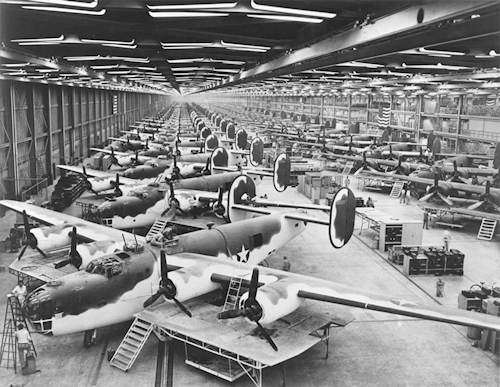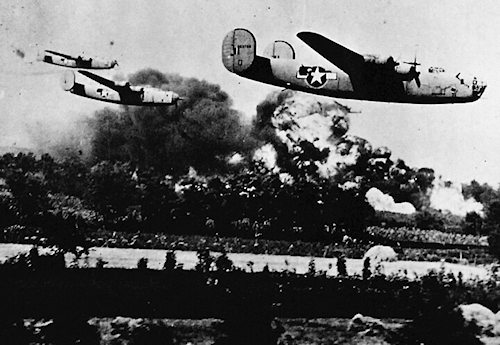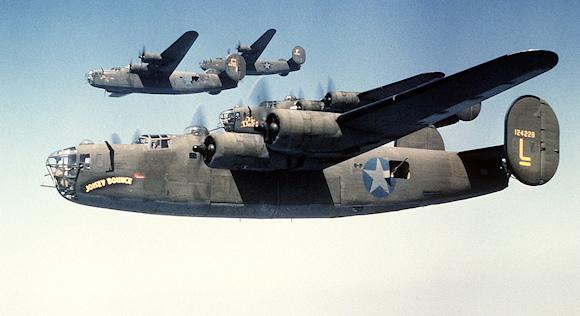Il Consolidated B-24 Liberator was an important bomber used by the United States Army Air Forces in World War II. The main users of the aircraft - in addition to the United States Army Air Forces - were the US Navy, the Royal Air Force and the Royal Australian Air Force.
The four-engine planes B-24During the conflict, they were used as heavy bombers, maritime reconnaissance aircraft, anti-submarine aircraft and transport aircraft.
The first prototype of Liberator it took to the skies for the first time on 29 December 1939, and gave good results; the vehicle entered active service starting from 1941.
From 1940 to 1945, over 18000 examples were produced. It is worth remembering that there were many versions of the basic type. Furthermore, i B-24 they also equipped numerous Royal Air Force squadrons.
The wing of the vehicle allowed a remarkable cruising speed, a long range and the ability to carry a heavy bomb load. However, it was not easy to fly and the low speed performance was not good.

The bomber appeared "unsightly" because it was quite squat, and supported by a very narrow medium-high wing. In addition to this, it can be asserted that the Liberator it wasn't a brilliant airplane, but it was certainly a solid, fast (for its time), safe and robust machine. 1
I B-24During the war, they were used in all theaters of war.
Made to carry out bombing raids particularly during the day, i Liberator they were not always as suitable as the Boeing B-17 Flying Fortress (Flying Fortresses).
A noteworthy raid took place on 12 June 1942. On that occasion 13 B-24, departing from North Africa, carried out bombing raids against the oil wells and refineries operated by Germany near Ploesti (Romania). An even more important attack, again around Ploesti, occurred with theOperation Tidal Wave on 1 August 1943 (photo). The strategic objective was to reduce and undermine the Third Reich's oil production.
It is important to underline that starting from 1942 there was - essentially - no Italian city in the central-south that did not "encounter" the B-24...
Overall, it can be argued that i Liberator in their missions they scored their blows meticulously and together with their "colleagues" from the Flying Fortresses they contributed to the final victory.

After the end of the conflict the B-24 was retired from active service by the US Air Force.
The Indian Air Force used the aircraft until 1968.
Il Consolidated B-24J it had a wingspan of 34 m, height 5,372 m and length 20,47 m.
The empty weight was 16556 kg, while loaded 24948 kg.
Engine: 4 Pratt & Whitney R-1830 Twin Wasps, power 1200 HP. The top speed was 478
km/h (at 7600 m), while the cruising speed is 346 km/h. The ceiling altitude was 8500 m.
The armament consisted of 2 mm M12,7 Browning machine guns. Furthermore, the aircraft could carry a bomb load of 3600 kg (short range) and 2300 kg (long range).
1 See G. Bonacina, The Liberator, in Illustrated History n°152, 1970, p.124
Photo: US Army Air Forces / AAF Antisubmarine Command / USAF












